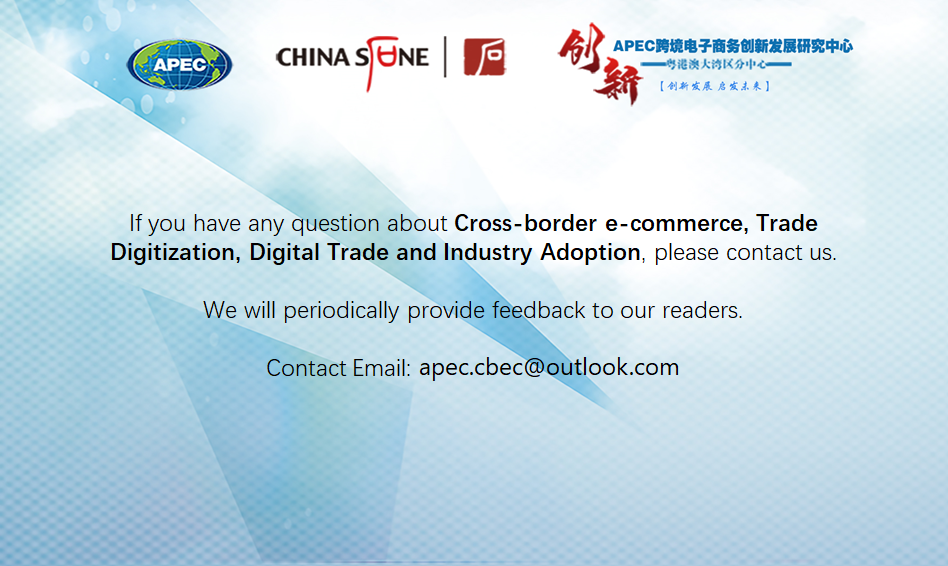1 Integrated Services for MSMEs in International Trade (ISMIT)
ISMIT provider refers to those enterprises that have the status of foreign trade operators, accept the entrustment of domestic and foreign customers, and sign comprehensive service contracts (agreements) according to law. These enterprises rely on the comprehensive service information platform, providing such trade services including customs declaration and inspection, logistics, tax refund, settlement, credit insurance and financing business etc. ISMIT providers are agency service enterprises, which should have strong import and export professional services, Internet technology application and big data analysis and processing capabilities, and establish a relatively perfect internal risk prevention and control system.
Translated from
Source: Notice of five departments on promoting the healthy development of foreign comprehensive service enterprises (GSH [2017] No. 759)
2 Digital trade / trade digitization
Digital trade is a concept proposed by the United States in the 2001-2003 Congress Trade Promotion Act. Digital trade, in a narrow sense, is the transaction and delivery of electronic products and digital services on the Internet; from the broad sense, it includes any part of negotiation, trade and delivery of goods and digital service.Trade digitization is evolved from the concept of "paperless trade" put forward in the 1990s. The process of trade digitization is a process in which the whole trade link is gradually networked and digitized. Digital Trade and trade digitization are two dimensions. Digital trade emphasizes more on legal significance; Trade digitization emphasizes on practical significance. The result of trade digitization brings about digital trade. The development of digital trade includes the process of digitization. These two words can replace each other in a sense, but the concept of digital trade is greater than that of trade digitization.
Translated from
Source: speech by Professor Wang Jian, APEC Research Center for cross border E-commerce innovation and development
Email: apec.cbec@outlook.com
Website: www.apec-cbec.com
Social media: 0086 14774995114 (Wechat, Whatsup),
Telephone: 008-755-83251951
Address: 33rd Floor, Building B, Shenzhen International Innovation Center, No. 1006 Shennan Avenue, Futian District, Shenzhen, Guangdong Province, PR China.
The ability to move data over digital networks has fundamentally changed how industry works. Firms in industries across the economy have adopted digital technologies to improve their efficiency and productivity, to offer new or enhanced products and services, and to interact better with customers.1 During the early years of digital innovation, firms usually aimed to improve communications, both internal and with customers, and to reach new markets.2 In recent years, businesses have been seeking to facilitate the full range of business functions, using three broad types of digital technologies: connected devices and data management technologies related to the IoT; digital technologies for robotics and other automation; and cloud computing services for data processing and advanced analytics. The digital products and services relying on these technologies are primarily B2B.
Source:
1.Daugherty et al., Driving Unconventional Growth, 2015, 4; Manyika et al., Digital America, December 2015, 3. 12
2.USITC, Digital Trade in the U.S. and Global Economies, Part 2, 2014, 50–51.
3.USITC, Global Digital Trade 1: Market Opportunities and Key Foreign Trade Restrictions, 2017, 24.

